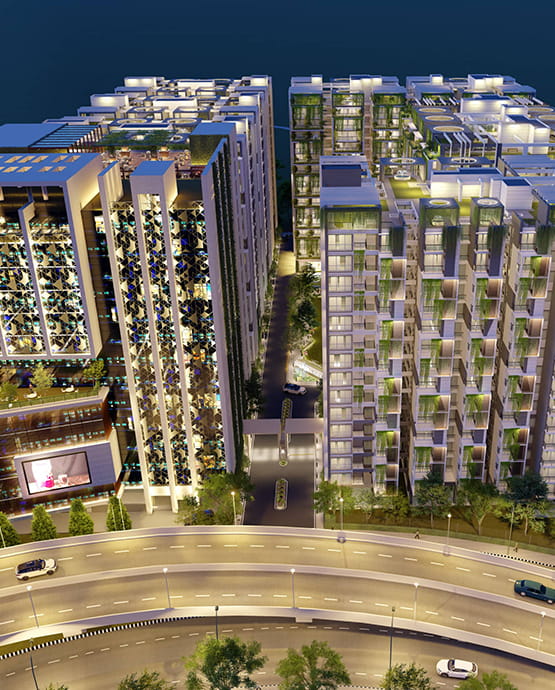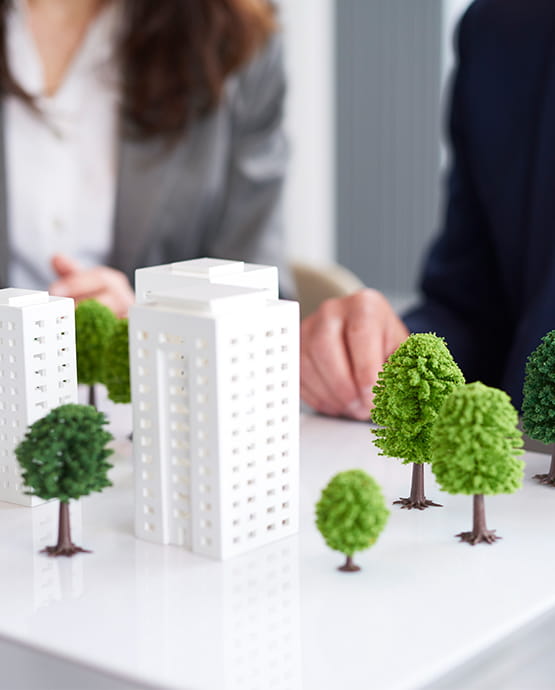Sustainability in Architecture: Designing for a Greener Future
- Mar 10, 2024
- Posted by: Tropical Homes
- Category: blog
In today’s real estate landscape, addressing environmental concerns has become of utmost importance. Sustainable architecture stands as a beacon of change, reshaping the way we envision design and construction.
Focused on reducing environmental impact, conserving resources, and enhancing energy efficiency, sustainable architecture is rapidly gaining traction worldwide. So in this blog, we will discuss the fundamental principles, cutting-edge innovations, and the myriad benefits of sustainable architecture. Let us get started and take the first step towards a more eco-conscious future!
Why Sustainable Architecture is Crucial in Real Estate?
In the realm of real estate, the significance of sustainable architecture cannot be overstated. It plays a pivotal role in minimizing the adverse environmental effects of buildings while maximizing efficiency in resource utilization.
By opting for sustainable materials like recycled steel and eco-friendly wood, and incorporating features such as thermally efficient glass, buildings can significantly reduce their carbon footprint. Techniques like passive solar design, green roofs, and rainwater harvesting further elevate the sustainability quotient of a property, transforming the way we approach architectural design.
Not only do these strategies contribute to environmental preservation, but they also enhance the overall appeal and value of real estate properties. In a world increasingly concerned with sustainability, embracing these principles is not just commendable; it is essential for staying competitive in the real estate market.

Benefits of Sustainable Architecture
In the realm of real estate, embracing sustainable architecture offers tangible benefits for both individuals and communities. In this segment, we will explore some of these benefits –
Energy Efficiency
At the core of sustainable architecture lies a commitment to energy efficiency, a cornerstone in reducing environmental impact and operational costs. By integrating design elements such as insulation, natural lighting, and efficient HVAC systems, buildings can significantly decrease energy consumption while maintaining comfortable indoor environments. Additionally, the careful selection of materials further minimizes resource depletion and carbon emissions associated with construction.
Water Conservation

Sustainable architecture places a strong emphasis on water conservation, implementing innovative solutions like rainwater harvesting and efficient plumbing fixtures. These strategies not only reduce water consumption but also promote resilience in the face of water scarcity. By integrating site-specific considerations into design, such as preserving natural habitats, minimizing ecosystem disruption and more, sustainable buildings contribute to sustainable water management practices.
Passive Design Strategies
Innovative passive design strategies are integral to sustainable architecture, leveraging natural elements to enhance building performance and resilience. Through thoughtful building orientation, natural ventilation systems, and shading techniques, passive design minimizes reliance on energy-intensive mechanical systems, reduces operational costs, and lessens environmental impact. Furthermore, green infrastructure initiatives like green roofs and urban forests not only mitigate environmental stressors but also create healthy urban environments for communities to thrive. By embracing passive design strategies, sustainable architecture paves the way for a more resilient built environment.
Community Engagement
Sustainable architecture fosters community engagement and empowerment, involving local stakeholders in the design and implementation process. By incorporating community needs and preferences into architectural decisions, sustainable buildings become more inclusive and reflective of diverse perspectives. This participatory approach not only enhances social cohesion but also strengthens the sense of ownership among residents.
Long-Term Value
Investing in sustainable architecture offers long-term value for property owners and investors, with reduced operating costs and increased asset resilience. While upfront costs may be higher, the long-term benefits – including energy savings, reduced maintenance expenses, and enhanced property value – far outweigh the initial investment. Sustainable buildings also demonstrate a commitment to corporate social responsibility, attracting environmentally conscious residents. As the demand for sustainable real estate continues to rise, properties that prioritize the environment will remain competitive in the marketplace.
Future of Sustainable Architecture

In real estate, the future of sustainable architecture shines brightly. Innovations like smart buildings and biophilic designs are revolutionizing how sustainable spaces are created.
Looking ahead, advancements in technology such as smart home systems and net-zero buildings (e.g. Bullitt Center in Seattle, Omega Center for Sustainable Living in New York, Research Support Facility at National Renewable Energy Laboratory in Colorado. And more) will continue to drive the evolution of sustainable architecture.
The main focus here is shifting towards regenerative design, aiming to create buildings that actively benefit the environment. With these advancements, the future of sustainable architecture promises a greener and more sustainable world.
Conclusion
In summary, sustainable architecture is not just an idea anymore; it is a dynamic shift towards responsible and thoughtful design. As we gaze into the future, the ongoing challenge for developers and residents alike is to practice a green and sustainable future.
Whether you are a homeowner looking to incorporate sustainability in your living environment or a real estate professional keeping up with the shifting market dynamics, Tropical Homes Limited is here to address your every query. For any queries, reach out to us at +88 09666 777 551 or email us at sales@tropicalhomesltd.com Your dream space eagerly awaits you!
Frequently Asked Questions (FAQs)
1. What are some sustainable materials used in architecture?
Common sustainable materials include bamboo, reclaimed wood, recycled steel, and rammed earth.
2. What is the role of green roofs in sustainable architecture?
Green roofs help reduce urban heat island effect, manage stormwater runoff, and provide natural insulation, contributing to overall sustainability in architecture.
3. How can architects design energy-efficient buildings?
Architects can incorporate passive design strategies, utilize efficient building systems, and integrate renewable energy sources like solar panels.
4. What are some examples of net-zero energy buildings?
Bullitt Center in Seattle, Omega Center for Sustainable Living in New York, and Research Support Facility at National Renewable Energy Laboratory in Colorado.













